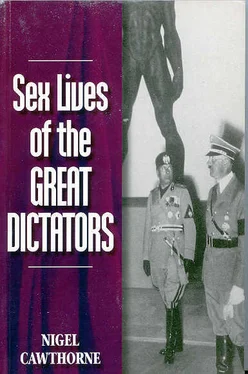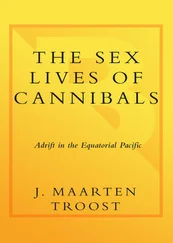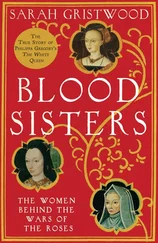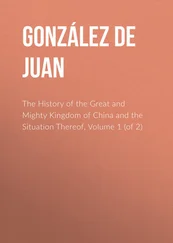In 1945, Fawziah returned to Cairo. The Shah granted her a divorce in 1948, but cited her infidelity rather than admitting his own. Five months later, Fawziah married Esma’il Shirin, the nephew of Farouk’s favourite mistress.
For more than a year, members of the Shah’s family scoured the world in search of a new bride. His twin sister Ashraf came up with a girl called Nina Bakhtiar; but two of his other sisters, the Princesses Shams and Fatemah, had plans of their own. Both were eager to get back into favour. Princess Shams had been banished after divorcing her husband and marrying the son of an army musician, and Fatemah had married an American adventurer named Patrick Hilliyer against the Shah’s expressed orders. They (bond an eighteen-year-old girl called Soraya in London. She was living in a bedsit in Kensington and attending a private English language school. Her photograph was sent to Tehran and the Shah decided to have her checked out.
Soraya was the daughter of Khalil Esfandi, a minor tribal chief, and Eva Karl, who had been born in Moscow of German and Baltic extraction. They met and married in Berlin and went to live in Iran where Soraya was born. When she was fifteen, the family returned to Europe, where Soraya completed her schooling and her father ran up huge debts in the casinos.
When no embarrassing skeletons were found in the closet, Princess Shams returned to Tehran in triumph with Soraya in tow. A dinner was organized by the Shah’s mother to introduce her to his brothers and sisters. Shams and Fatemah managed to insinuate their husbands into the gathering. When the Shah himself turned up unannounced in one of his flashiest uniforms, Soraya slipped into a state of shock. Nevertheless, the Shah was impressed by her, especially by her beautiful, green, almond-shaped eyes. Shams was told to ask Soraya for her hand in marriage on his behalf. He wanted an answer that night.
“In that case, my answer is yes,” Soraya said.
A wedding date was set, but Soraya came down with typhoid. There was an epidemic in Tehran at the time. The situation was grave. The doctors gave up on her. In desperation, the Shah let a personal friend, Lieutenant-Colonel Karim Ayadi — an army vet — try his hand at saving his young fiancee from what everyone agreed was certain death.
Ayadi miraculously succeeded in saving her, with the help of a new drug called aureomycin which he had read about in a French magazine. It had to be flown in from America. He was rewarded by being appointed the Shah’s personal physician. It was not until four years later that he qualified as a doctor.
For the wedding, a Christian Dior gown was flown in from Paris, but it was too heavy for the weakened Soraya to wear, so Ayadi and the Shah lopped ten yards off the train to the horror of the French couturier. For warmth, Soraya was told to wear thick woollen army socks and a cardigan, which she wore over her Dior gown and under her fur coat. The Iranians were pleased with the wedding pictures. They were happy that the Shah was marrying someone pleasantly fat.
However, Soraya soon became unpopular — and not just because she was thin. She never mastered Persian and her childish ways upset the courtiers. The Shah, on the other hand, found her childishness alluring and indulged her every whim. He would whisk her off to romantic hideaways. They were very much in love.
But after five years of marriage, she had not had a child and the Shah still had no son. Soraya was such a jealous person, he could only visit his daughter from his first marriage in secret. People began talking about “the German cow” and “the barren one”. The mullahs began to put pressure on him. Under Islamic law, he could take a second wife. Although the Shah resisted the suggestion, Soraya believed he would change his mind.
Then at a ball, Soraya caught the Shah dancing with a beautiful blonde, and gave an ultimatum. Either he abdicate and live with her in exile, or keep his crown and lose her. That night she flew out of Tehran. She settled in St Moritz, and the Shah repudiated her under Islamic law. He gave her $80,000. She kept the jewels she had collected over the years and he conferred the title Imperial Majesty on her. They continued to exchange letters and, on one occasion, agreed to meet informally. But both thought better of it.
So by the early 1950s, the Shah needed a wife again. His mother Taj al-Moluk interviewed a stream of debutantes. Each week a new list of possible brides for the Shah was published and journalists would receive hefty bribes from the families of eligible girls to mention their daughters as possible candidates.
Meanwhile the Shah had a number of brief affairs. He was seen with twenty-two-year-old Dokhi, nineteen-year old Safieh and a German film actress named Helga Anderson. Things got serious with Princess MariaGabriella of Savoy, the daughter of ex-King Umberto of Italy. They met in Switzerland, fell in love and considered marriage. The problem was that MariaGabriella was neither a Persian nor a Muslim. Her nationality could be fixed easily enough with an imperial decree. The Iranian embassy in Paris began the ground work. They paid huge sums to French genealogists to prove that Maria-Gabriella was a descendant of Princess Zelidah, the daughter of Muhammad II, the eleventh century Moorish ruler of Seville. The press announced that the Shah’s intended was a woman of impeccable Islamic background.
Maria-Gabriella would still have to become a Muslim, of course. Otherwise there would be hell to pay with the ayatollahs. The problem was that ex-King Umberto prided himself on being a good Catholic and he vehemently opposed his daughter’s planned conversion to Islam. Large sums of money were offered and ex-King Umberto slowly came round. He said he would stifle his objections if the pope gave his benediction to the marriage. In February 1959, the Shah paid a brief visit to Pope John XXIII, who said he could not sanction the marriage unless the Shah converted to Catholicism. This was impossible. Three months later the Iranian government announced that rumours regarding His Imperial Majesty’s marriage to a foreign subject were greatly exaggerated. The Shah would not think of taking a non-Muslim wife.
A few months later, the Shah’s sister Princess Shahnaz and her husband, Ardeshir Zahedi, found a new bridal candidate, eighteen-year-old Farah Diba. She had returned home for the summer holidays from the Ecole des Beaux Arts in Paris where she was studying architecture. They found her charming and decided to introduce her to the Shah. He had, in fact, already met her at an official reception for Iranian students at the Iranian embassy in Paris. But the meeting had left little impression on him.
“How could you forget having met me?” she would chide later. “Was it not love at first sight?”
Farah remembered the incident all too well. She had broken with two of her friends, who were Communists, to attend. Then she had been shoved aside by royalists who mobbed the King of Kings. To restore order, the students were presented one by one. When it was Farah’s turn, the Shah expressed surprise that a woman should want to become an architect.
“He had such sad eyes, beautiful and sad eyes,” she wrote to her mother.
She was still in Paris when she heard of the break-up of the Shah’s second marriage. Again she wrote to her mother.
“I have just heard that His Majesty and Soraya have parted. What a shame!” she wrote.
The Shah’s search for a new bride filled the French press that summer and fellow students teased her about it. At one student party, everyone signed a paper saying that she should be queen.
When she arrived home for the holidays, her family urged her to visit Hessarak, Zahedi’s residence. She was presented to Princess Shahnaz. The two women met a number of times and it was clear to Farah that she was under scrutiny.
Читать дальше












